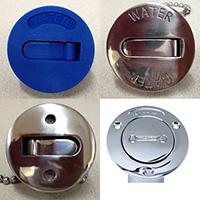I have the 3YM20 in my boat. Yesterday, I attempted to change out the coolant. I say attempted because, although I removed about 3+ quarts, I could not get it all. Sucked as much as I could out of the heat exchanger with a vacuum pump and then let the rest flow out of the drain cock shown in the left diagram in post #3. Had to run the engine a bit to get the rest of the coolant flowing out. Had to wait for the thermostat to open first. At least I know that is OK. Did not overheat.
The diagram in my book labels the drain cock in the right diagram in post #3 as being a drain for the raw water in the block. Way too difficult to get at, anyway.
Coolant was still a clear pinkish red except for a little sludge in the reservoir. This is after 8 years and 560 hours. No lecture, please, on that. I know it was way overdue.
Doesn't seem, however, that I was able to put as much coolant back in as was taken out. Air block? Engine runs fine and does not overheat. Going back today and run it and see if she wants more coolant.
Besides taking off the hoses to purge any air that might be in there, is there an easier way? If, indeed, I do have an air block. Coolant flows just fine, however. Am I missing something here?
When I do this again, would a shop vac pressed up to the neck of the pressure cap suck enough out? This was one very messy job. There's gotta be an easier way.

